“We can date this, but we don’t know the code, because we don’t know anymore what it is to live in the wild.”
It's eleven o'clock at night, and Ana Berliner is shining her torch on a rock face deep in the valley of the Côa River. I'm looking at a piece of art that's 30,000 years old and the hairs are standing up on the back of my neck.
“The people who did this didn’t know how to plant crops or domesticate animals,” says Berliner. “It was the Stone Age.”
I've found my way to Côa by following the Douro River from Porto. Cruise ships now ply its waters all the way up to the Spanish border, but I'm hopscotching by train and boat in a DIY adventure that's taking me back in time.

I begin my journey at Porto’s Campanhã station and after an hour catch my first glimpse of the river. One moment we are hundreds of metres high, with a sheer drop below us; a few minutes later we’re racing alongside the water at Mosteiro. There are great bends and curves, and tiny river beaches with enticing slivers of sand. Grand quintas – wine estates – and crumbling mansions are surrounded by steep terraces, built of stone, which snake up the hills. Vineyards stretch as far as the eye can see; port and Douro wine will accompany my journey.
We pull into the station in the surprisingly large town of Peso da Régua. I’m too late for the dinner and wine-tasting, but the Quinta de Marrocos rustles up soup, bread and cheese. The Douro – river of gold – is shimmering in the evening sun as I sink onto a sofa on the terrace and sip my first drop of the family’s own white wine.
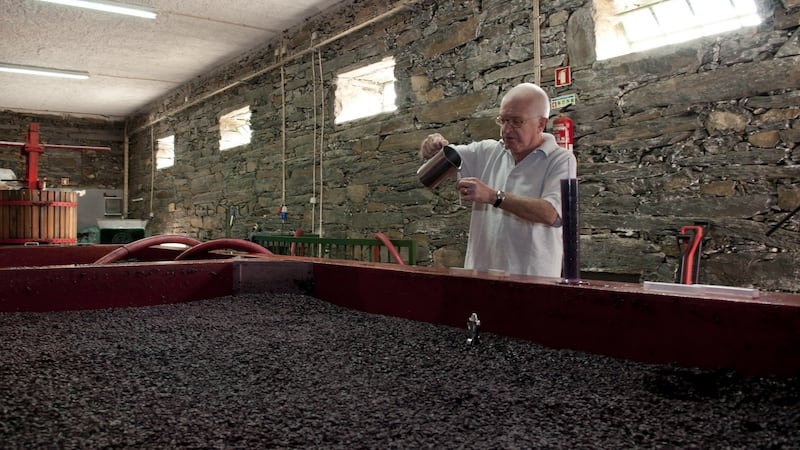
Religious art
My room has rather too much religious art, and in the morning I learn that this was once a Franciscan monastery and that they were the first to make wine here. I take my coffee outside and watch half a dozen men moving slowly across the terraces, pruning and tidying, mending and tending, nursing the vines that will produce the world’s oldest denominated wine – port – when harvest comes.
César Sequeira's family bought the quinta in the 1920s and originally sold port to the big producers, most of them British, who grew immensely wealthy by controlling its trade. But after Portugal joined the EU new rules came in allowing smaller producers to strike out on their own.
“Seven to 10 people stomp the grapes for four hours at a time in the traditional way,” Sequeira says, as we walk up stone staircases to visit his vines, gnarled and black with age. We move down into the cool, stone-walled cellars and I learn that vintage port doesn’t just mean old.
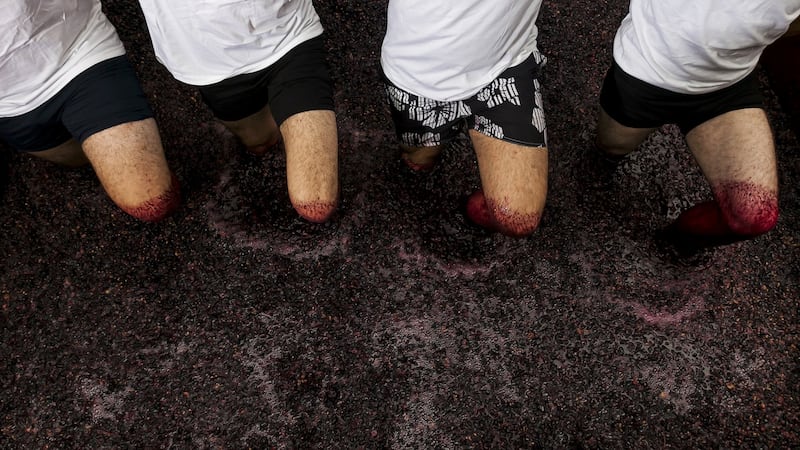
In the tasting room I'm soon drowning in a port barrel of terminology: rubies, tawnies, reservas, vintages, late-bottled vintages and so on. "Here, try our 10-year-old tawny," Sequeira says. "It won a gold medal in Germany. "
I decide that I much prefer the fine white port, which is like distilled Douro sunshine. But by now Sequeira is on a roll, and he's opening even more bottles. "You have to taste this colheita. Decanter magazine rated it exceedingly good," he says proudly. I finally escape to my quinta bedroom and fall asleep under the gaze of the Sacred Heart.
The next morning I'm using a day-cruise to take a one-way trip upriver to Pinhão aboard the Vale do Douro. When the cruise music finally stops, I can relax into the rhythm of the river. Fishermen cast from the bank, little egrets pick their way through the shallows on ballerina legs, and the occasional heron waits patiently.
Huge lock
We pass through a huge lock to cross one of the dams that now control the flow of this once-wild river.
In the blue-and-white-tiled station there's a heady scent of jasmine as I rejoin the train on the Linha do Douro. From now on there's no more road. There's no room for it, as the valley narrows to a gorge. The drop is precipitous and we creep along the edge, sometimes entering a tunnel, then crawling towards the light. From the terminus at Pocinho I cross the Beira Alta, a high and harsh plateau where ruined fortresses perch on hilltops, and black-shawled women still walk the streets of tiny hamlets. The village of Castelo Rodrigo is illuminated as I enter its gates, find my way through honey-coloured stone streets, and tumble back into the Middle Ages.
On Sunday morning there's a murmur of prayer and response from the parish church. Up in the ruined castelo swallows swoop through ancient stone windows, catching insects on the wing, and lizards soak up the sun on the Traitor's Gate. This is a quiet and wild corner of Portugal now, but over the centuries castles and villages changed hands during bloody battles with neighbouring Spain.
Thousands of Jews fled here after their expulsion from Spain in 1492. The medieval cistern that gives my B&B its name, Casa Cisterna, has two entrances, one Gothic and one Moorish, and is also believed to have been used as a synagogue.
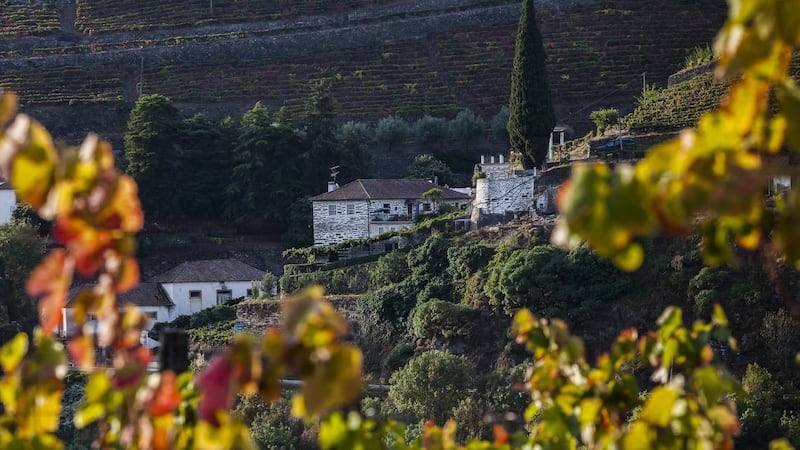
The stories here are written in the stones, and the story of Castelo Rodrigo is the story of Portugal. Inscriptions on one house point to the presence of "new Christians"; after a brief period of tolerance Jews were forced to convert to Catholicism. Many of the villagers are returnees from Mozambique, Portugal's former colony, like Helena Sousa who runs a café with her husband João on the rua da Sinagoga. There's a scallop sign over the door and João tells me that occasional passersby are pilgrims following an ancient Camino, the Via de la Plata, from Salamanca to Santiago de Compostela.
Umber sun
In the evening my B&B hostess Ana Berliner and I set out in her jeep to cross the plateau as an umber sun sets. We turn off the main road and descend into darkness, bumping over a dirt track, dropping hundreds of metres in twists and turns. Nightingales sing in the scrub, and far below a silver river rushes, untamed and undammed, to its meeting with the Douro. As we reach the floor of the Côa valley Berliner points out a medieval track, then a few moments later the remains of a Roman road.
We park up and walk as the first stars appear, our eyes adjusting to the dark, the common condition of man during most of our time on earth. Then, the night was full of danger, of bears, and wolves, or huge beasts like the auroch.
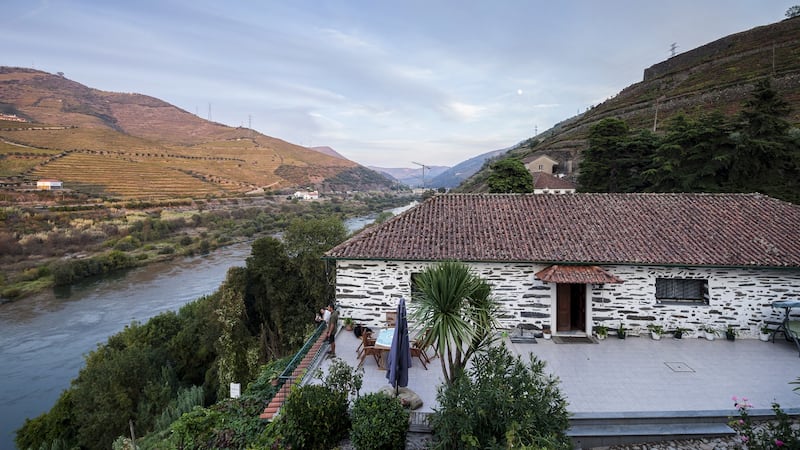
Suddenly Berliner stops and points her flashlight at a rock face. “What do you see?” she asks.
I can see overlapping lines, shapes incised into the schist, but what?
She traces a shape with the beam of her flashlight. “Look at the head, the neck, the legs, the . . .”
“A horse,” I cry out, as the shape resolves into a fine line drawing.
“Look below, what else do you see?”
A horse with what looks likes two heads, pointing in different directions.
“What other art does this?”
I can’t think of any.
“Cartoons,” says Berliner, her eyes sparkling. “We are only doing now what Palaeolithic man did twenty, thirty thousand years ago: showing movement.”
Engravings
This group of engravings at Peñascosa is just one of many in the Côa valley, the largest outdoor rock art site in Europe. We walk on. After a while my eyes begin to read the rock, and overlapping ibex and horses emerge from the darkness into the light. An auroch, the ancestor of every domestic cow and bull, stares out, its extinct strength captured by an artist unknown. At another rock face Ana stoops low, her beam tracing another, rounder, shape: eyes, gills, fin, a second fin. It's a rare engraving of a fish, possibly a salmon, abundant in Palaeolithic times but sadly gone due to the damming of the Douro. The engravings were only discovered in the 1990s as plans were being made to dam the Côa too, which would have involved flooding the area. An outcry stopped the project and it's now a World Heritage Site, a link to our common past, and a reminder of a time when man lived among wild animals on the edge of Europe.
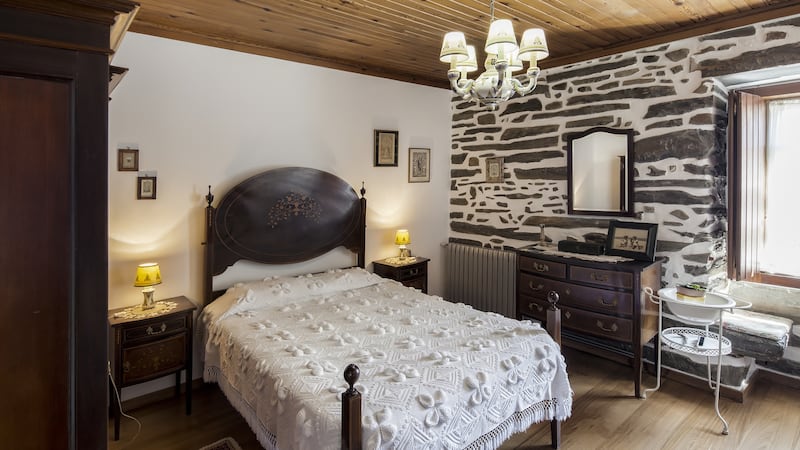
“We can study these drawings,” says Berliner, “but we can only speculate on why they did this, that this was man passing on information, honouring these animals or calling on the spirits.”
As we walk back to the jeep the sky is a roof of stars. I go to sleep on a tented platform at Star Camp, run by Ana’s friends Sara and Miguel, and dream of wild horses. At sunrise next morning Miguel and I walk to a rocky outcrop where griffon vultures nest and Bonelli’s eagles soar over the Côa valley. Centuries and millennia fall away and we are walking in the footsteps of our ancestors, modern man, who hunted and fished here, and left his mark.
How to get there
Ryanair flies to Porto
Linha do Douro: Trains run from Porto to Pocinho about five times a day, with many stops including Peso da Régua and Pinhão. cp.pt
Week -long cruises from Porto with operators such as Viking run all the way to Spain. Day trips from 2-10 hours are also possible from ports including Porto, Régua, Pinhão or Pocinho with some train/boat combinations. Many operators.
You can do the journey by car, which is useful for the Côa area in particular, where public transport is poor, but do take at least one train and one boat trip.
Where to stay
Quinta de Marrocos, Peso da Régua
Good-value friendly homestay on a working vineyard with fabulous views. Rustic food with port and wine. Has three Alsatians and a lot of crucifixes, so may not be for everyone. Tasting tours/lunch also available. Room rates from €50.
quintademarrocos.com
Vintage House Hotel Pinhão, upmarket boutique hotel right on the river, from €230. csvintagehouse.com
Casa da Cisterna, Castelo Rodrigo
Stunning B&B, with great food and views. From €70 up to €155 for a suite. casadacisterna.com
Star Camp, tented camp set high above the Côa valley. From €90.
starcamp-portugal.com
Côa engravings
The best time to visit the engravings is at night when the light can be controlled. It also makes for a very atmospheric experience. Tours can be arranged through Casa da Cisterna or Star Camp.









